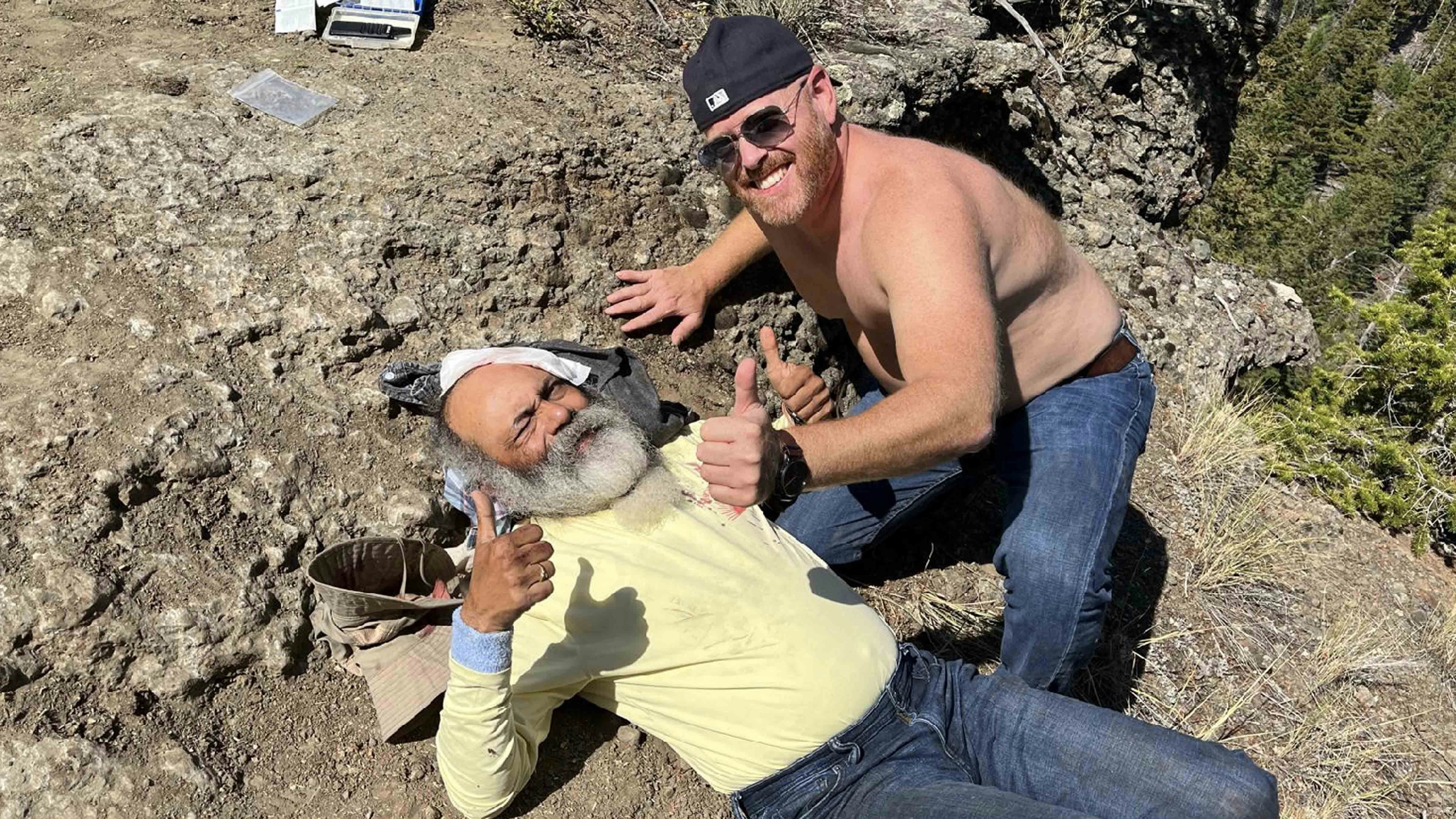The “hard hazing” of a popular Grand Teton grizzly and her three yearling cubs led to two of the cubs being killed and cannibalized by a large male grizzly, a prominent wildlife photographer said.
In May, Grizzly 1063 and her cubs were being hazed away from residential areas at Colter Bay in Grand Teton National Park, according to the National Park Service (NPS).
Two of her yearling cubs were apparently killed and partially eaten by a male grizzly on May 13.
Wildlife photographer Tom Mangelsen, who has followed Teton’s grizzlies for years, said he thinks that the hazing caused 1063 and her cubs to become separated, giving a boar (male grizzly) a chance to kill the cubs.
He was on a wildlife viewing and photography trip to Africa when he got word that 1063’s cubs had been killed. He said he suspected what many had been saying – that the hazing of the bears was partly to blame.
“I knew about the hazing of Bonita, aka Grizzly 1063, before I left and got numerous reports that the Park continued hard hazing her and cubs often and still are,” he said.
Not Quite The New Grizzly 399
In years past, Mangelsen closely followed Wyoming’s beloved Grizzly 399, and his photographs of her and her cubs played a key role in making her the world’s most famous bear.
Mangelsen named her last cub, Spirit. His partner, Sue Cedarholm, gave the name Bonita to Grizzly 1063.
It remains uncertain whether Spirit survived after Grizzly 399 was struck and killed by a vehicle south of Jackson last fall.
In 399’s absence, Bonita/Grizzly 1063 has gained prominence and popularity.
Though her fame isn’t quite what 399s was, she’s quickly gaining a loyal following and seems to be the bear that everybody is talking about this year, Wildlife photographer Deby Dixon of Gardiner, Montana told Cowboy State Daily.
It boils down to location, Dixon said. Like Grizzly 399 before her Bonita/1063 likes to hang out near roadways and other crowded areas.
“She’s the most visible bear this year,” Dixon said.
That’s why so many were aghast when two of 1063’s cubs were killed, and the third went missing.
The third cub later reunited with its mother, apparently uninjured, much to the delight of Grand Teton Grizzly watchers.

Cubs Were Bigger Than Usual Victims
Grizzly boars will occasionally kill cubs that aren’t theirs, in hopes of putting the mother grizzly back into heat and impregnating her.
However, that usually happens with small cubs-of-the-year, rather than much larger, stronger and faster yearling cubs.
Mangelsen said that big grizzly boars are sometimes scapegoats for wildlife agency officials.
In the case of Grizzly 1063 and her cubs, he thinks a boar was scapegoated for driving the mother and cubs apart before killing two of them.
But he’s skeptical whether that’s what actually happened.
“My educated guess from on the scene reports and information was that the family was separated by hazing before they found the dead yearlings,” he said.
Mangelsen thinks that had the mother and cubs been together when the boar approached, he would not have dared pick a fight with them.
“A mother grizzly is often capable of fending off a male grizzly twice or bigger than her. I’ve witnessed it with grizzlies here, in Alaska and polar bears in the subarctic,” he said.
“Males do not want to risk getting badly injured over trying to separate cubs from mom. Since the yearlings were pretty big, they too could protect themselves or even join in on the fight.
My opinion is they were separated by hazing and killed by a male one by one without the protection of their mom,” Mangelsen said.
NPS Says Hazing Didn’t Break Up Family
Messages left for NPS officials weren’t returned on Monday.
But the agency previously stated that there was no evidence to suggest that hazing separated Grizzly 1063 and her cubs before the cubs were killed.
Grizzly 1063 and the cubs had been hazed away from “developed and residential areas at Colter Bay,” NPS reported.
“In accordance with park policy, staff hazed the bears when they lingered in these areas or remained immediately adjacent to nearby roadways,” NPS stated.
The agency claimed the hazing didn’t lead to the mother and cubs becoming separated. But instead, an aggressive male bear might have separated them.
“Each time hazing was deemed appropriate and implemented, GB1063 and her cubs remained together,” NPS stated.
According to the latest word from the network of Grand Teton grizzly watchers, 1063 was last spotted near Heron Pond, south of Colter Bay, Mangelsen said. Her surviving cub was apparently spotted north of the Colter Bay marina.
Mark Heinz can be reached at mark@cowboystatedaily.com.





